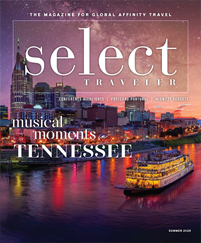Portland, Oregon
Portland has 52 breweries “to the best of our knowledge — you never know when a new one is going to pop up,” said Marcus Hibdon, communications and public relations manager with Travel Portland.
The city is also the largest craft beer market in the United States.
“We’re making a lot of craft beer, and we’re drinking a lot of craft beer,” he said, adding that Oregon, as a whole, consumed nearly 2.8 million barrels of beer in 2012.
Oregon, and Portland specifically, were ahead of the modern brewing culture curve. BridgePort Brewing and Widmer Brothers Brewing both opened in 1984, shortly after the state passed a law that allowed breweries to sell beer directly to the public rather than through distributors, Hibdon said. That opened the door; a second wave of microbreweries followed in the 1990s.
“The local populace got used to different beers, and we started creating a local market long before other areas did,” Hibdon said. “We have 52 breweries because local Portlanders are constantly drinking craft beer.”
Many of Portland’s breweries are small but robust operations that primarily serve the surrounding neighborhoods, Hibdon said. Many breweries offer tours, including BridgePort and Widmer, as well as smaller breweries too numerous to mention. Tour companies such as Brewvana provide a variety of walking and driving brewery tours that are available to the public or private groups.
PITTSBURGH, PENNSYLVANIA
Pittsburgh’s history is rooted in the steel industry, and one can almost learn or tell the story of Steel City through its beer. The European immigrants who arrived in Pittsburgh brought their old beer traditions with them, even as they began building the steel industry in their new city.
“During the heyday of steelmaking, this was certainly known as a shot-and-a-beer town,” said Craig Davis, president and CEO of the Greater Pittsburgh Convention and Visitors Bureau. In the Pittsburgh neighborhoods, there are a lot of taverns and a lot of churches, and some are right next to each other.”
Part of that blue-collar, working-class, salt-of-the-earth culture is the work-hard, play-hard approach to life, and people can play at several local breweries, such as Church Brew Works, North Country Brewing Co., Penn Brewery, East End Brewing Co., Pennsylvania Brewing Co. and Pittsburgh Brewing Co.
Although the modern-day Penn Brewery got its start in 1986, it sits on the same site where the Eberhart and Ober families opened three breweries in the mid and late 1800s; the site still includes three original E&O buildings that are National Historic Landmarks.
PA Brew Tours also offers group tours of the city’s breweries, including the iconic Church Brew Works in the Pittsburgh neighborhood of Lawrenceville. The brewery is housed in an ornate 1902 Roman Catholic church, and the beer is brewed on the altar, Davis said.
MILWAUKEE, WISCONSIN
“When people say the word Milwaukee, what’s the first thing that comes to people’s mind? Boom. Beer,” said Wendy Dobrzynski, group tour manager for Visit Milwaukee.
Milwaukee was once considered the brewing capital of the world because the city was once home to the “Big Four” breweries: Blatz, Pabst, Schlitz and Miller brewing companies. Of those, Miller — MillerCoors today — is the only one still operating, but Milwaukee is catching up on the micro and craft brewing fronts.
In Milwaukee, visitors can tour the MillerCoors factory, but they can also tour craft breweries such as Lakefront Brewery, Milwaukee Brewing Co. and Sprecher Brewing Co., which is known as much for its root beer as for its Black Bavarian beer. Lakefront’s tours are “hilarious” and highly rated by visitors because the owners “like to poke fun at themselves and poke fun at their beer,” Dobrzynski said.
But with 150 years of beer history, the breweries are just the start. Visitors can tour Best Place at the Historic Pabst Brewery, including parts of the original administrative building and two courtyards where guests can see a bronze statue of Captain Pabst and a statue of King Gambrinus, or take a brewery tour by boat via Milwaukee River Boats.
Guests can also tour Captain Pabst’s extravagant 1892 mansion or stop at Forest Home Cemetery, where Blatz, Pabst and Schlitz are all buried in the same corner. Miller is in the Catholic cemetery.
BOULDER, COLORADO
As a liberal, progressive college town, the city of Boulder is known locally as the People’s Republic of Boulder, and it’s home to professionals and college students who, it seems, are all about living more environmentally friendly, socially responsible lives.
Boulder brews its beers like it builds its community: consciously.
“They say that Boulder is happy and healthy and well educated; the university [of Colorado] is here, and there’s a bunch of start-up companies here,” said Kim Farin, communications manager for the Boulder Convention and Visitors Bureau. “It feels like Boulder’s beer scene mirrors that whole Boulder ethos in that it’s innovative, it’s active, and it’s experimental.”
New Planet makes award-winning gluten-free beers, and Upslope Brewing puts all its brews in cans. Twisted Pine Brewing even uses carrots in its Roots Revival Carrot IPA.
Boulder Beer Co. kicked off the city’s and the state’s brewing scenes. When Boulder Beer opened in 1979, it was the first microbrewery in Colorado and the 43rd licensed brewery in the United States.
And the scene has continued to grow from there: Avery Brewing, Fate Brewing, Walnut Brewery, West Flanders Brewing, Wild Woods Brewery, the list goes on.
Boulder Brew Tours offers walking and driving tours to several microbreweries. Fun fact: Boulder Beer has a tap house at Denver International Airport, so visitors can squeeze in a taste of Boulder during their layovers.
WEB EXCLUSIVE: ST. LOUIS
St. Louis is another city where old and new brews come together, and Anheuser-Busch is the oldest of the old. Like Milwaukee, St. Louis experienced an influx of German immigrants in the mid-1800s. One of those immigrants was Eberhard Anheuser, a soapmaker, who bought into the Bavarian Brewery and, by 1860, owned it outright.
Built in 1852, the brewery was the first in the United States, and the St. Louis site served as the company’s world headquarters until it was relocated to Belgium. St. Louis still serves as Anheuser’s American headquarters.
Groups can tour the Anheuser-Busch factory and stop in at the new beer gardens or get their picture taken with the Budweiser Clydesdales, said Donna Andrews, director of public relations for the St. Louis Convention and Visitors Commission.
Almost as big a name in St. Louis as Anheuser is the brewpub that kick-started the city’s microbrewery movement when it opened in 1991: Schlafly, pronounced “sha-flee.” Technically, it’s the St. Louis Brewery, but the names are used interchangeably because Schlafly is its only beer brand. Schlafly offers tours, as does Falstaff Brewing, 4 Hands Brewing, Six Row Brewing, Morgan Street Brewery, Trailhead Brewing, Urban Chestnut Brewing and others, Andrews said.
“It has really taken off here in the last 15 years or so,” she said.
So much so that STL Brewery Hop now offers bus ride brewery tours with several stops per tour, and the city is home to the annual St. Louis Brewers Heritage Festival every June in Forest Park.









